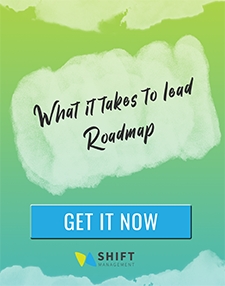
You know what they say about body language…
The way we position ourselves as we share a message comprises the bulk of the communication that gets through to the audience. Estimates range anywhere from 55% to 90% (and the debate among communication experts will likely continue to rage on), but let’s not get too stuck on specifics.
Here’s what’s important: people are paying attention to what our body is doing when we talk. So, we should be paying attention to it too. Particularly when the stakes are high – such as in a job interview.
In fact, in her book “How To Talk To Anyone,” Leil Lowndes argues that you can capture — and hold — anyone’s attention without saying a word. And we think that’s a communication strategy worth hearing about.
This post is the last of 4 in the series “How to make yourself irresistible in a job interview.” Part one: The 3 crucial ways to prepare introduces you to the KLT factor and shares 3 ways you can help your interviewers like you more before they even meet you.
Parts two and three together bring you 8 strategies you can use to help people know, like, and trust you quickly – after all if you can’t assure your interviewers you are likeable and trustworthy during the time you have together, no amount of technical skill will likely get you a job offer.
And here we’ll dig into the 5 physical gestures you can use to increase your KLT factor.

Gesture #1: Eye contact
They say that the “eyes are the windows to the soul” and, if that is indeed true (or at least if your interviewers think it’s true), you’re going to want them to have a chance to look through those windows.
But – this one is also easy to get wrong. If you stare intensely into the eyes of your interviewers without looking away, they are likely to feel uncomfortable or intimidated. If you don’t look at them enough, they will think that you are hiding something or that you are overly nervous. If your eyes start darting from one interviewer to the next quickly, you’ll give the impression that you want to leave the interview RIGHT NOW.
What you need is a balance between looking at your interviewers and looking at your surroundings. Researchers say that maintaining eye contact for roughly 60% of the conversation lets you come across as interested, friendly, and trustworthy – precisely the impression you are going for.

Gesture #2: Open hands and palms
Ever heard of the “Truth Plane?”
It’s an imaginary line that crosses horizontally through your belly button, and by placing your hands here, cupped and open right at stomach height, you convey a powerful message: I’m the perfect blend of resolve and credibility.
Open-palmed gestures convey trustworthiness. Think of the alternative: a pointed finger. Pointing is often seen as rude or aggressive. Chances are that when someone points toward you, your knee-jerk reaction is to feel blamed for something – defensive. Conversely, if someone approaches you with open hands and palms that face upward, you probably feel inclined to agree with them because you don’t see them as a threat.
And, if you see them as friend rather than foe, you’re more likely to agree with them. And, because you agree with them, you’ll probably like them more, trust them more, and feel that you know them better…
The same goes for your interviewers.

Gesture #3: The pointed finger
You’re thinking:
“Didn’t you just say that pointed fingers made people feel defensive and that I shouldn’t do that?”
Well, yes – and no.
Pointing at someone can convey the wrong message but pointing in an of itself can be an incredibly effective way of getting someone’s attention. And, it can help you literally make a point.
Read these three sentences and imagine how a pointed finger could be effectively used with each:
-
“You know, I just remembered something important.”
-
“This one’s important.”
-
“If you look right here…”
By pointing at appropriate times during your dialogue you can convey conviction and signal to your listeners that something important is about to come up. Used well, the pointed finger can function to underline the key elements you need your interviewers to remember about you after the interview is over.

Gesture #4: The nod
In Canadian culture, a nodding head is the nonverbal equivalent to the word “Yes.” It signals agreement, and as we’ve already gone through, when people agree with you, your KLT factor goes up.
Here’s another fact: people unconsciously mirror the body language of those around them. (Incidentally they also mirror voices, intonations and accents.) Mirroring is a way to bond and build understanding between individuals, so when you see your interviewer smile, smile back. If you notice that their head is slightly tilted to the side, tilt yours. And, if they start nodding, nod back.
You can also use “the mirror” test to see how connected your interviewers are feeling to you. When you initiate a nod, do you see them nodding back? If they are, there’s a good chance that you’ve made it into their good books, or at least their better books.

Gesture #5: Pointed toes
Ever find yourself staring at people’s feet?
If you answered “no,” then maybe you should start. It turns out that a person’s feet may be the most accurate measure of their emotional state. You see, it’s relatively easy to manipulate what our hands and eyes are doing, but most people are far less aware of what their feet are doing. Less awareness equates to less control, so it’s our feet that often reveal our true feelings.
Next time you are speaking with someone, glance to see which direction their feet are pointing. If they are pointing toward you, it generally means that they are interested in you and the conversation you are having. If they are pointed away, that’s your cue that they would rather be somewhere else. And, if you see a person talking with someone else but their foot is pointed toward you, that signals that they’d rather be talking to you.
And, in an interview, if you notice that your interviewer’s feet are pointed away from you, don’t take it personally. They may have had 5 other interviews that day and only 3 hours of sleep the night before – you probably wouldn’t want to be interviewing even the most magical candidate at that point either. Instead, see if you can get them to point their toes toward you as the conversation goes on. Take it as a challenge!
Pulling it all together
In order to make these gestures feel natural to both yourself and your interviewers, you should practice. Videotape yourself while you’re talking on the phone to see what kind of hand gestures and body language you use when you speak. Isolate the movements you see working well and decide which you would like to replace. Then keep practicing.
When you’re ready, get a friend to conduct a mock interview with you (use these 5 questions you should prepare answers for in your next job interview to help), and videotape that. Remember – it’s better for you to get feedback before the interview when you can actually make changes.
As you work through these steps, imagine how much better you’ll feel about walking into your next interview. You’ll (literally) be able to put your best foot forward, look the interviewer in the eye, and know that you are about to known, liked, and trusted.

Looking for more ways to build your career? Check out the Canadian Workplace Suite. Choose from the 3 course options and get the results you need:
-
Finding the job you want: The inner and outer game – $7
-
The ultimate career builder’s toolkit – $47
-
Canadian workplace certificate program – $297
About Marie:
Marie Gervais, PhD, CEO Shift Management is a business-to-business entrepreneur who specializes in helping employers train their middle management to lead, get their workplace learning online and interactive, and conduct team assessments to figure out who to promote and how. She has a background in integrating internationally-trained individuals to the workplace and has supported many businesses in their efforts to hire, retain, support and promote immigrant and diverse employees.
Get in touch – she would love to hear from you: marie@shiftworkplace.com or 780-454-5661






